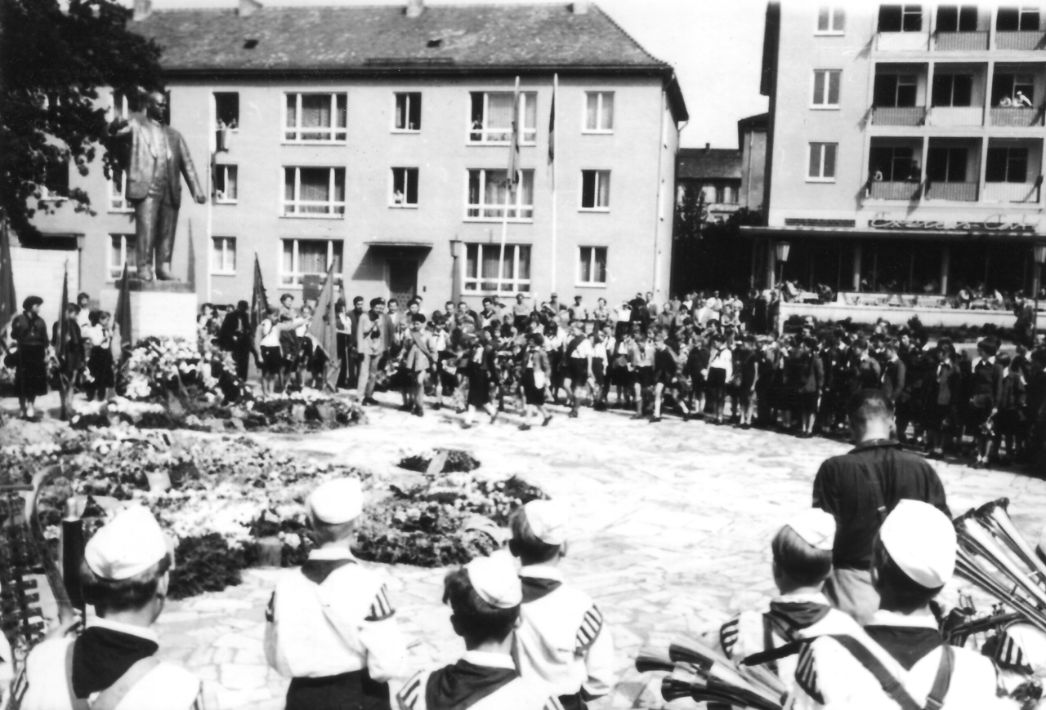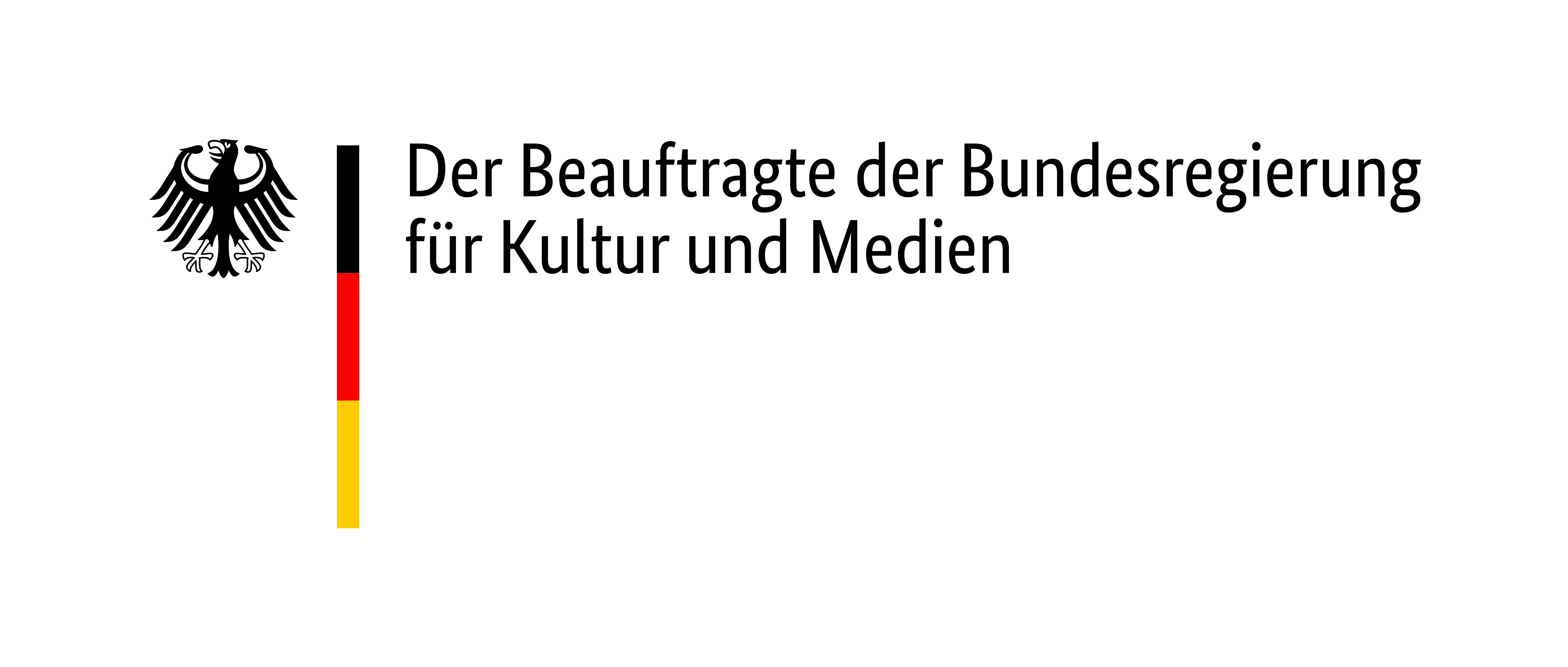
In the years that followed, a canon of annual events was established in which the Thälmann memorial was at the centre of events or, as was the case for the May Day demonstrations, was at least a prominent point of passage for the ceremonial processions. Events to mark Thälmann's birthday or the day of his assassination were still being organised in the mid-1980s, especially on anniversaries with thousands of participants.
However, events such as the swearing-in of members of the company combat groups or the admission ceremonies for members of the socialist youth organisations, the Young and Thälmann Pioneers and the Free German Youth, also took place in front of the memorial. The slogan emblazoned on the wall behind the Thälmann statue and the figure of the honoured figure as a supposed guide and pioneer could be flexibly instrumentalised as intended from the outset. At the same time, over the years, the stagings took on the character of rehearsed rituals in which the slogans were increasingly recognisable as always being the same, despite changing nuances.
Only a minority of participants felt an inner connection to the site and the people honoured here, whether Thälmann himself or the other victims of Buchenwald concentration camp honoured in the square's name. The original motive for occupying the square with content commemorating the dead of Buchenwald receded - as this increasingly shifted to the National Memorial on the Ettersberg. As tourism returned to Weimar's classical heritage, the railway station district fell behind and its buildings began to show signs of decay. Thälmann stood alone on the Square of 56,000, and it was this prominent role that was to jeopardise the continued existence of the memorial when the state that had raised him on a pedestal suddenly collapsed in 1989/90.

